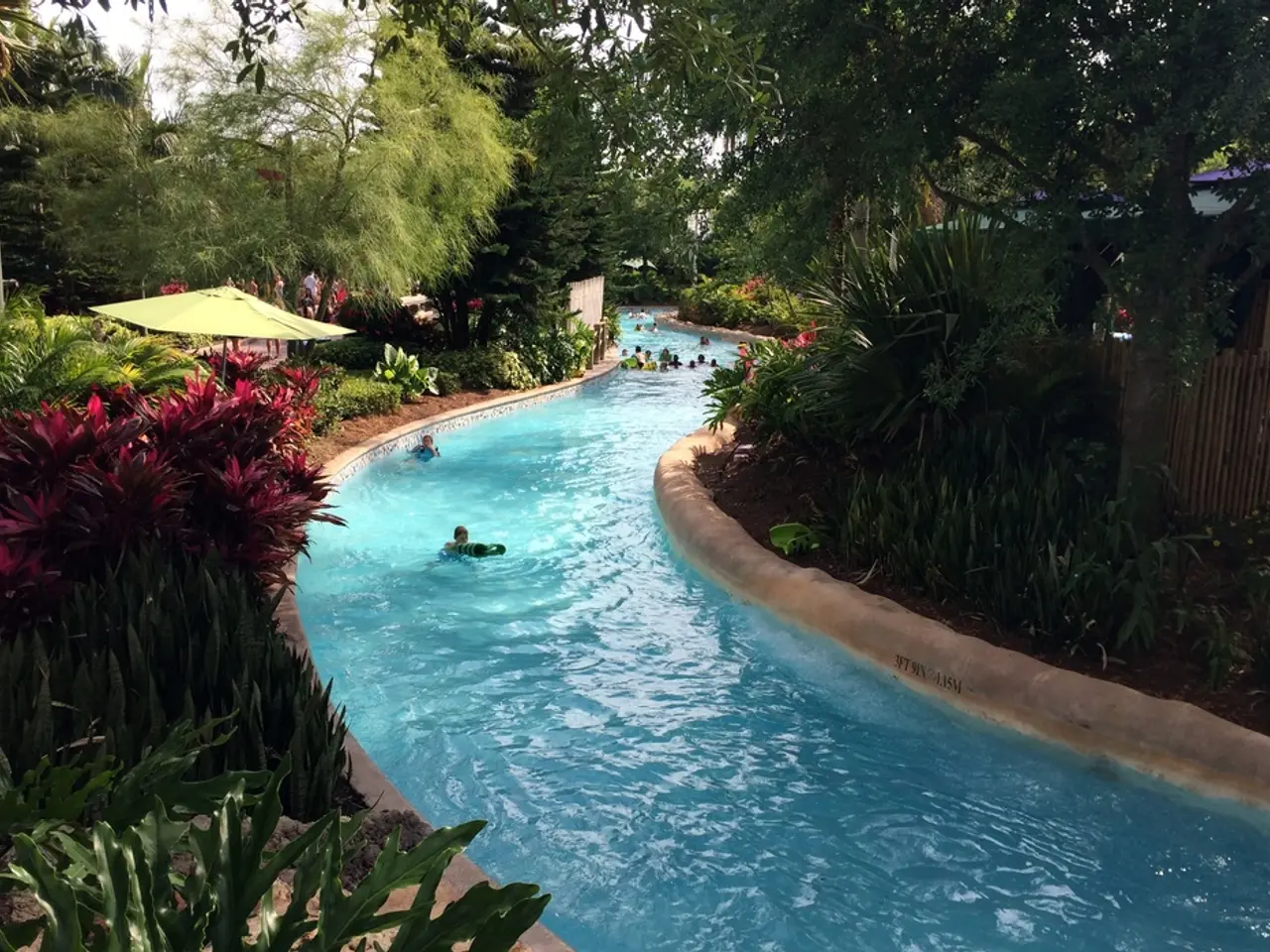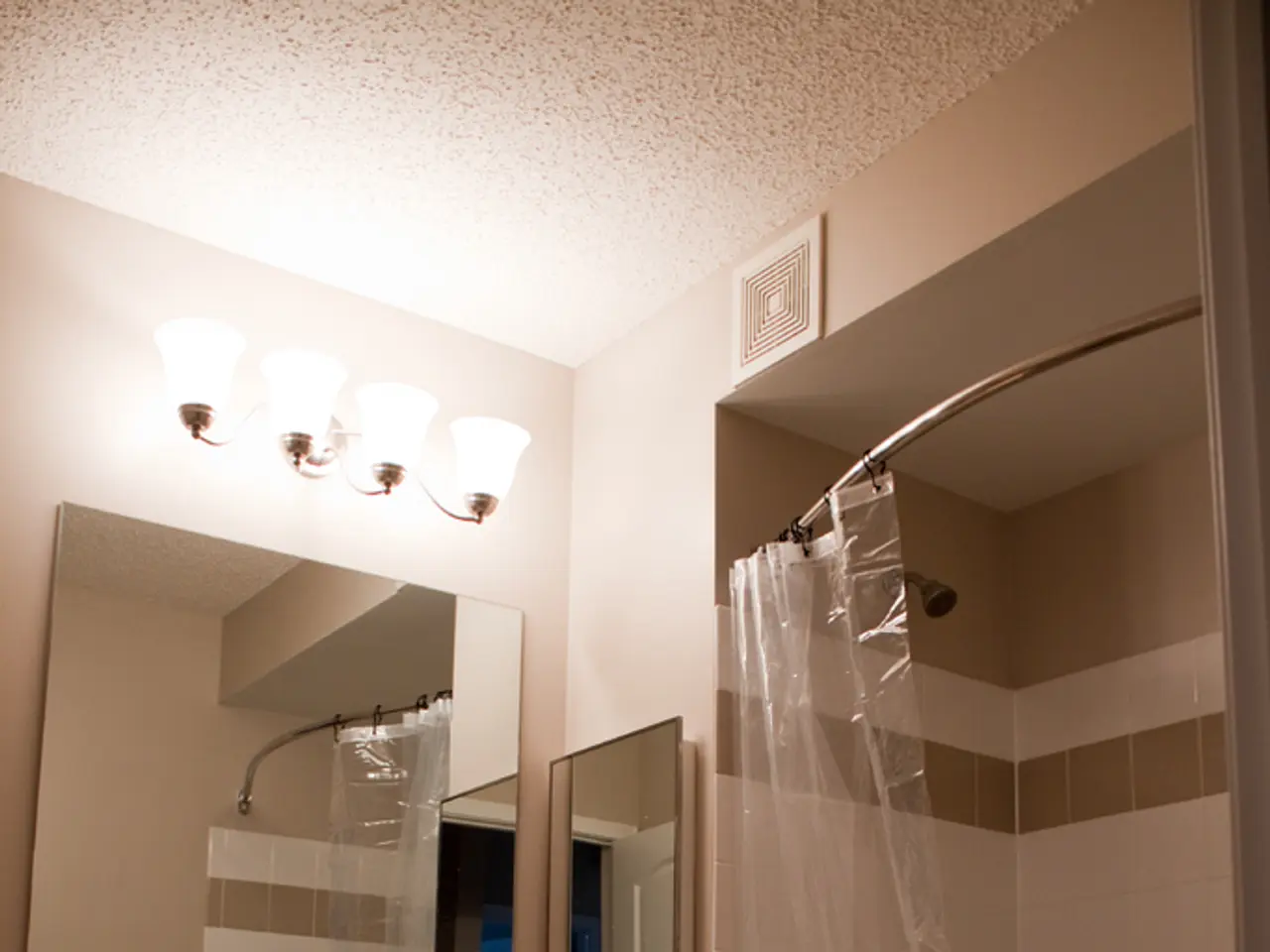Method for Clarifying and Electrifying a Dull Pool
In a warm, humid climate, maintaining a clear pool can be a challenge, especially when faced with green algae. This article provides practical advice on how to keep your pool clean and algae-free.
Green pool water is a clear sign that algae have taken over, and the chlorine levels have likely dropped. To restore the water's clarity, start by shocking the pool with a strong chlorine dose to kill the algae immediately. A robotic or suction-side pool vacuum is recommended for efficient dirt and fine particle removal. Brushing the pool walls and floor helps dislodge algae stuck to surfaces.
Maintaining chemical balance is crucial. Chlorine is the primary sanitizer that eliminates algae, but high phosphate levels from surrounding vegetation or fertilizers can foster algae growth. Testing and adjusting pH and chlorine regularly keeps the water clear and inhibits algae proliferation.
Routine skimming to remove leaves and debris, preventing the accumulation of organic matter that feeds algae, also helps maintain clear water. Using chlorine floats or automatic chlorinators can help keep consistent sanitizer levels, especially when the pool is unattended for periods.
Preventing green pool water involves several key practices. Brushing the pool once a week, especially behind ladders, steps, and in corners, is essential. Regularly cleaning the pool filter ensures it removes suspended particles effectively. To prevent green pool water, it is important to keep chlorine levels consistently between 2-4 ppm, even when the pool is not in use, and test the water weekly to make adjustments.
In a severe algae bloom, the pool water can become black-green or swampy. In such cases, the amount of shock needed depends on the severity of the greenness, with light green pools requiring 2x the normal shock dose, medium green pools requiring 3x, and dark green or swampy pools requiring 4x or more. After shocking the pool, the pump should be run 24/7 to keep the water moving and help the filter catch dying algae.
Swimming in a green pool is not recommended due to hygiene risks and the potential presence of bacteria. It is important to deal with debris in the pool before adding chemicals, as debris can eat up chlorine before it can do its job.
To prevent green pool water, it is essential to control phosphate sources. A phosphate remover may be necessary if levels run high. Shocking a green pool should be done after sunset or at night to prevent sunlight from burning off the chlorine.
Automating pool care, such as setting reminders or using a smart monitor, can help prevent green pool surprises. Dichlor shock should be avoided if CYA levels are already high, as it adds more CYA and can worsen the situation.
In summary, effective cleaning and maintenance to prevent algae and maintain crystal-clear water include vacuuming debris, brushing pool surfaces, frequent cleaning of pool filters, shock chlorination, regular chemical testing and balancing, minimizing phosphate contamination, routine skimming, and maintaining proper circulation. This comprehensive approach ensures green pools can be restored and algae growth prevented for clear, healthy swimming water.
Maintaining a clean and algae-free pool, even in a warm, humid climate, is crucial for a clear pool lifestyle. Home-and-garden care extends to pool maintenance, with regular brushing, vacuuming, and skimming crucial practices to prevent algae proliferation and keep the water crystal-clear.




